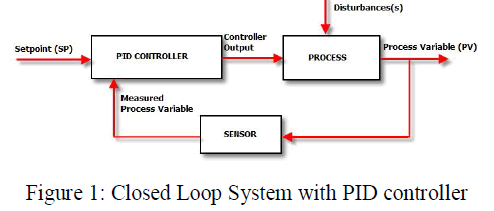Pid Regulyator Na Arduino
пятница 04 января admin 93
We will use the Arduino PID Library by Brett Beauregard and Front-End v03 using Processing.org version 3. We capture the fan speed by means of an Reflective IR Sensor with 330R and 100K Resistors. Contribute to br3ttb/Arduino-PID-Library development by creating an account on GitHub. Tembak tembakan zombie.
A few weeks ago we wrote where we’re building a seesaw which will balance a ball with the help of a proximity sensor, a servo and a PID controller implemented on an Arduino. All the parts have now arrived, the seesaw is assembled and the the firmware is implemented. In this post we will talk about the basic theory around PID controllers, look at the implementation for this project and discuss different challenges around controlling the seesaw as well as the current performance and areas of improvement. If you don’t care about the theory you can just go ahead and skip to the implementation part. Basic Control and PID Theory Controlling something physical with a computer is not as trivial as you might think. That said, when you know the basics it doesn’t have to be that complicated either.

Closed Loop Control A closed loop in this case means that the controller gets feedback from the output of the system with the help of a sensor and uses that to compute a control signal which is applied to the physical system. In our case with the seesaw, the system output is the position of the ball. The reference is where we want the ball to be and the error is the difference between the reference and the system/sensor output. If the error is zero then the ball is exactly where it should be. The control signal is the signal applied to the system. In our case this is the servo position. Stability and Damping A system can be stable, unstable or marginally stable: • A stable system will eventually converge to a steady-state.
• An unstable system will oscillate with a gradually increasing amplitude and never reach a steady-state. • A marginally stable system will oscillate with a constant amplitude.
It is the theoretic state between a stable and an unstable system. A stable system can be overdamped, underdamped, critically damped or undamped: • An overdamped system will reach its steady-state without oscillations ( turquoise line below). • An underdamped system will reach its steady-state after oscillating over a certain time. The amplitude will gradually decrease ( green line below) • A critically damped system system is optimally damped, i.e. It reaches the steady-state as quickly as possible without oscillating ( red line below). • An ideal undamped system without any friction may behave marginally stable ( blue line below).
The different types of damping visualized (source: ). The PID Controller PID control (or one of its close relatives) is probably the most common closed-loop control method. PID is an acronym for Proportional Integral Derivative, which also happens to be the three main mathematical elements (terms) of the PID controller. Depending on your system you might want to mix-and-match these terms. Some systems may only require a P, PI or a PD controller while others require the full PID package. Each term has a coefficient which you can look at as the tuning parameters (typically named K p, K i and K d).
These constants decides how much each term should contribute to the overall control. Let’s look at the three terms. Proportional The larger error the more gain is applied.
The P-term only takes into account the error between the sensor output and the reference. The larger error the more gain is applied (the output is proportional to the error). This might in some cases suffice as control, however you will often need something in addition to make the system stable and at the same time a bit quicker than a snail. A large K p results in large deviations for the control signal at large errors. This can often lead to a faster, but less dampened (or even unstable) system. Integral the I-term accumulates the error over time.
(Free) MOD is applicable for any type of graphic design – web, print, motion graphics etc and perfect for t-shirts and other items like logos, pictograms, with its 215 character set. (Free) (Free) Only for non-commercial use. You can see them all in the preview. (Free) (Free) Comfortaa is a simple, good looking, true type font with an amazingly large number of characters and symbols. It is absolutely free, both for personal and commercial use. Font collection mac torrent.
